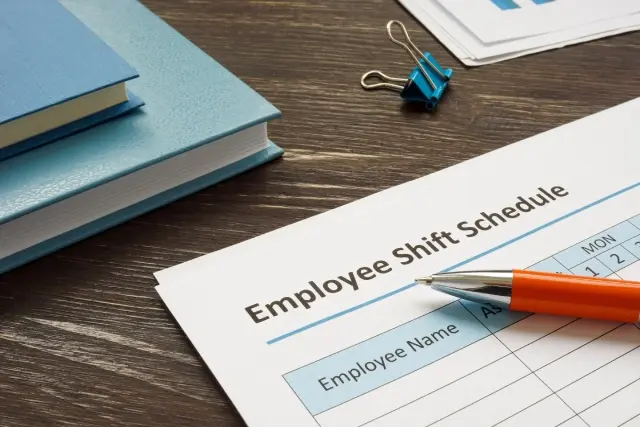Do you remember your first job? Most of us do. Oftentimes, it’s a little scary; young workers are learning a lot about relationships and responsibilities. It’s a right of passage that sets the tone for future jobs.
If you’re a franchise or QSR owner, chances are you employ a lot of first-time workers, which brings both its benefits and challenges. These Gen-Z workers might be a little cheaper to hire, but they also require more guidance. So how do you ensure the experience is great for all involved?
Here’s how to create a work environment for first-time employees that helps them do their best—and reaps your business the benefits.
1. Create a straightforward onboarding process
Onboarding can be a complicated process. Employees are often thrown into a mountain of paperwork that takes hours to complete. Paperwork for minors usually has another layer of complexity because their parents often have to be involved. Some documents, like Form I-9, are time-sensitive. While seasoned workers may be used to the fast pace of onboarding, first-time employees may still be getting all the proper documents in order.
Creating a straightforward onboarding process starts before day one. After you extend a job offer, sit down with the new employee to go over what the onboarding process will look like. Create a checklist of what documents the employee will need and what forms they will fill out.
Or use an HR management tool that handles the process for you. Solutions like Workstream can even send onboarding documents to new hires via text, making it easy for them to check off each task and sign documents before their start date.
2. Be present and communicate with new employees
Starting a new job can be overwhelming. There is so much to learn and do. Some Gen-Z workers might be nervous to ask questions or ask for help, causing more problems down the line.
Open communication can transform the employee experience. Managers of young employees should be patient and present, anticipating questions that may arise and proactively checking in to allow their team members to speak up without feeling like they’re behind everyone else.
3. Create a mentorship program
Managers are only one of the assets new hires can use. A mentorship program can help Gen Z workers feel comfortable at their first job. Pair new team members with more seasoned employees who are patient and enthusiastic about the job to create a positive and helpful relationship.
Here are some strategies to make mentorship programs work in an hourly environment:
- Ensure that the mentor and mentee share at least 1-2 shifts per week
- Encourage mentor/mentees to take breaks together to learn more about each other and connect
- Pay mentors/mentees for 3-5 hours per month to connect outside work
- Check in with both parties to ensure they get something valuable from the program
4. Offer flexible scheduling options
Many first-time workers are in high school or college, so unless you hire them for seasonal summer work, you’ll need to work around their school schedules.
High school students often have the same schedule from August to May, with some time off for winter, spring, and summer breaks. College students have wildly different schedules from day to day and semester to semester.
If you know scheduling will be tricky before hiring them, you can set the right expectations upfront. When you hire a first-time worker, ask for their school schedules and any time they'll need off upfront. Before each semester lets out, ask for an updated schedule so you can be on the same page. Schools often post their general schedules so you know when students might be out and when to ask for schedule updates.
5. Provide a clear career path
Starting your first job is exciting, but the intrigue can wear off after a while. Creating a clear path forward can give workers something to get excited about. What options does the first-time worker have if they stick with your business? Do you have a lead or manager program? Can they work in other departments? Could their tenure lead to a scholarship?
When creating a career path, it's essential to consider what matters to your employees. McDonald's Archways To Opportunity program is an excellent example of this. Working at McDonald's can offer employees a chance to get a free high school diploma, improve their English skills, or even go to college tuition-free.
6. Host team-building activities
First-time employees don't have a ton of experience working with other people. They likely haven't worked closely with another person outside of a school project. When you employ these young workers, you’ll probably spend a lot of time training them on basic employability skills like communication, teamwork, decision-making, and problem-solving.
One way to train your team is by hosting team-building activities. No, we aren’t talking about trust falls here. Team-building can start small. For example, take a few minutes during a team meeting to ask an icebreaker question and get employees to answer it.
7. Celebrate milestones and achievements as they happen
Can you imagine how amazing it would be to make it to the 90-day mark in your first job? What about working at the same place for an entire year? How about making your first big sale? These milestones are a chance to celebrate your first-time employees and show them the impact of having a job.
Keep these celebrations simple but impactful. Saying thanks/congratulations, writing a thank you note, or giving employees a small gift card as a token of appreciation can work wonders. You don't need a big budget to make employees feel appreciated.
Create an excellent environment for first-time employees by meeting them where they are
Employing a first-time worker requires a certain amount of sacrifice for companies. While you can typically pay a lower wage, you’ll need to do a significant amount of training to get the most out of these team members.
If you have patience and meet these team members where they are, you’ll create a successful team, even if your employees are inexperienced. Most importantly, you’re setting a standard for how these workers will approach their careers for the rest of their lives. This is a lot of responsibility, but it only takes a bit of support to create an environment your team can thrive in.





